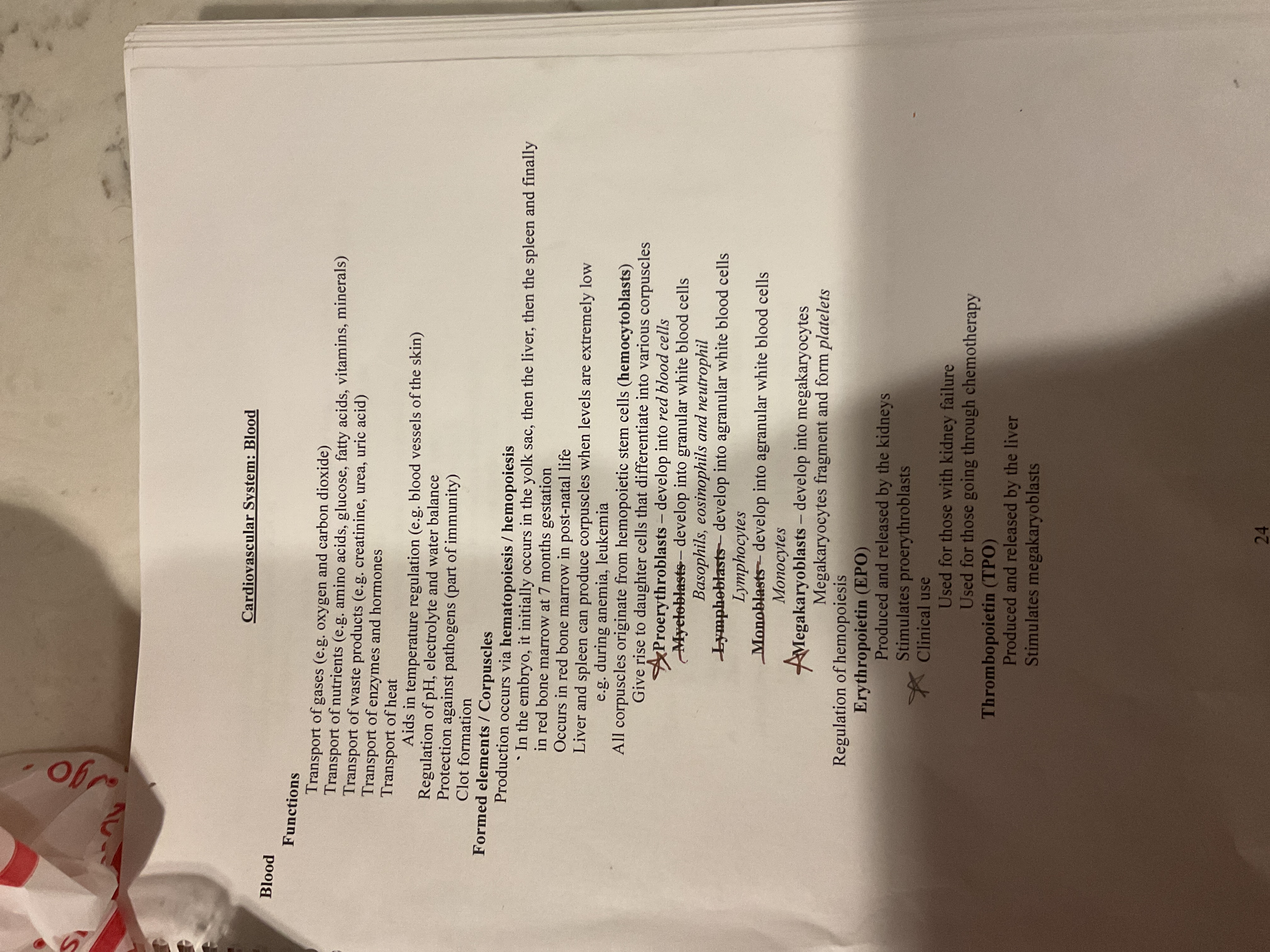What are the functions of blood and the formed elements of blood as outlined in the cardiovascular system?

Understand the Problem
The question appears to ask for information about the functions and formed elements of blood, including the processes of hematopoiesis and regulation of hemopoiesis. It outlines various types of blood cells and their origins, suggesting a study in human biology or physiology.
Answer
Blood transports essentials, regulates body functions, and protects. Formed elements are RBCs, WBCs, and platelets from stem cells.
Blood functions include transporting gases, nutrients, waste products, enzymes, and hormones; regulating pH, temperature, and water balance; and protecting against pathogens. Formed elements include red blood cells, white blood cells, and platelets, which originate from hematopoietic stem cells.
Answer for screen readers
Blood functions include transporting gases, nutrients, waste products, enzymes, and hormones; regulating pH, temperature, and water balance; and protecting against pathogens. Formed elements include red blood cells, white blood cells, and platelets, which originate from hematopoietic stem cells.
More Information
Blood plays a vital role in maintaining homeostasis in the body by transporting essential nutrients and oxygen while removing waste. Formed elements are crucial for immunity, clotting, and carrying oxygen.
Tips
Common mistakes include misunderstanding the roles of different cell types and confusing the processes of transport and regulation.
Sources
- Functions of blood: transport around the body - NHS Blood Donation - blood.co.uk
- 18.1 Functions of Blood – Anatomy & Physiology - open.oregonstate.education
- Functions of the Blood | Circulatory Anatomy - Visible Body - visiblebody.com
AI-generated content may contain errors. Please verify critical information